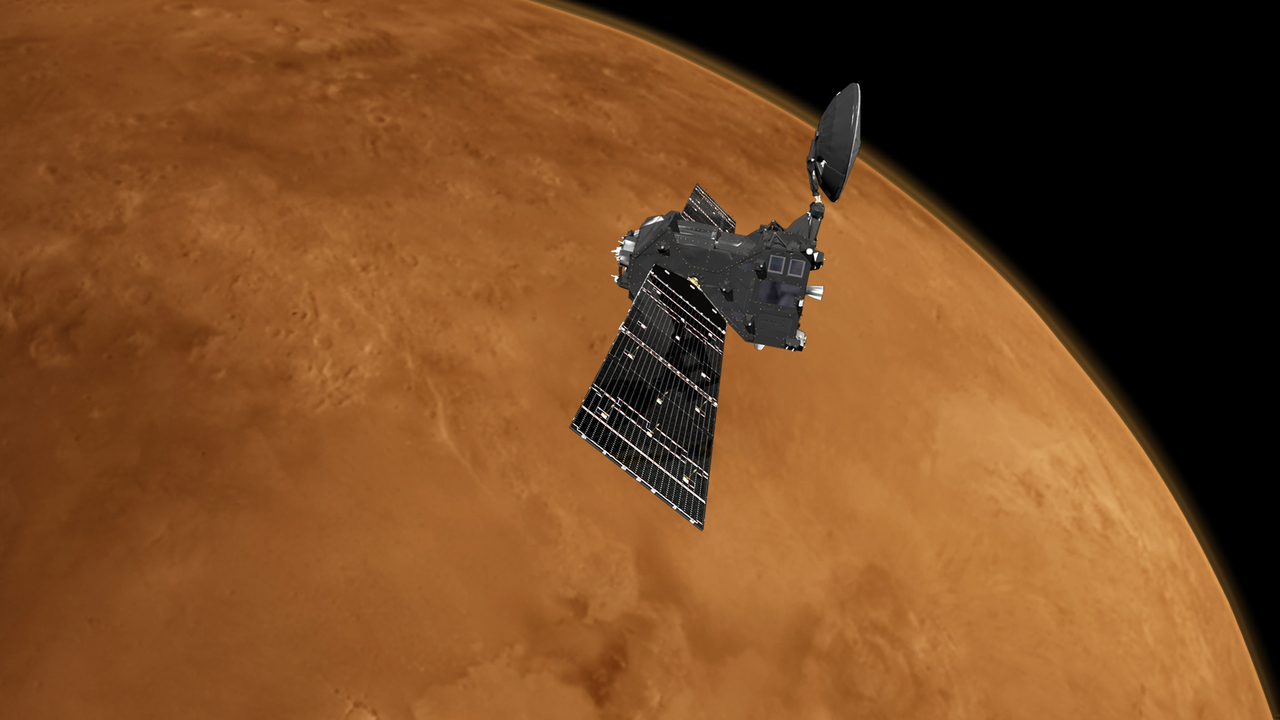Europe's New Mars Orbiter Begins Testing Science Gear

Europe's new Mars probe is making its first science observations at the Red Planet, if everything is going according to plan.
The Trace Gas Orbiter (TGO) arrived at Mars on Oct. 19 and is currently circling the planet once every 4.2 days. TGO was scheduled to begin testing and calibrating its four instrument suites on Sunday (Nov. 20), and this work should continue through next Monday (Nov. 28), European Space Agency (ESA) officials said late last week.
"We’re excited we will finally see the instruments perform in the environment for which they were designed, and to see the first data coming back from Mars," Håkan Svedhem, ESA’s TGO project scientist, said in a statement on Friday (Nov. 18). [Red But Not Dead: ExoMars Orbiter to Look for Water and Life (Video)]
TGO launched along with a piggyback lander called Schiaparelli this past March. Together, the two spacecraft constitute the first part of the two-phase ExoMars program, which ESA leads with assistance from the Russian federal space agency, known as Roscosmos.
Schiaparelli was a demonstrator that was designed to prove out the technologies needed to land a life-hunting rover — the second phase of ExoMars, which is slated to launch in 2020 — safely on Mars. Schiaparelli crashed during its touchdown attempt on Oct. 19, likely because it didn't fire its descent-slowing thrusters for nearly long enough, ESA officials have said.
TGO aced its orbit-insertion burn that same day. The probe is currently looping around the Red Planet on a highly elliptical path, coming as close to the surface as 140 miles (230 kilometers) and getting as far away as 60,900 miles (98,000 km).
TGO carries two sets of spectrometers that are designed to identify methane — a possible sign of Martian life, if such life exists — and other trace gases. It also carries a neutron detector, which should spot near-surface deposits of water or water-ice, and a powerful camera system.
Breaking space news, the latest updates on rocket launches, skywatching events and more!
The neutron detector has been collecting data for a while now for calibration purposes, ESA officials said, but the other three instrument suites should be getting their first workouts at the Red Planet now, or in the next few days.
For example, the camera system "will first point at stars to calibrate itself for measuring the planet’s surface reflectance," ESA officials wrote in the same statement. "Then it will point at Mars."
The imager may also capture photos of the tiny Mars moon Phobos during this eight-day trial period, which also serves to test how well TGO relays data back to Earth, ESA officials added.
TGO's main science work won't start for a while, however. Early next year, the probe is scheduled to begin a lengthy "aerobraking" campaign. During that time, it will use friction provided by the Martian atmosphere to shift into a nearly circular orbit with an altitude of about 250 miles (400 km).
The spacecraft should reach this orbit, and begin its science mission, by March 2018. This mission will last about two years, but TGO will continue to serve as a communications relay for the ExoMars rover — and NASA surface craft such as the Curiosity rover — through 2022, ESA officials have said.
Follow Mike Wall on Twitter @michaeldwall and Google+. Follow us @Spacedotcom, Facebook or Google+. Originally published on Space.com.

Michael Wall is a Senior Space Writer with Space.com and joined the team in 2010. He primarily covers exoplanets, spaceflight and military space, but has been known to dabble in the space art beat. His book about the search for alien life, "Out There," was published on Nov. 13, 2018. Before becoming a science writer, Michael worked as a herpetologist and wildlife biologist. He has a Ph.D. in evolutionary biology from the University of Sydney, Australia, a bachelor's degree from the University of Arizona, and a graduate certificate in science writing from the University of California, Santa Cruz. To find out what his latest project is, you can follow Michael on Twitter.
